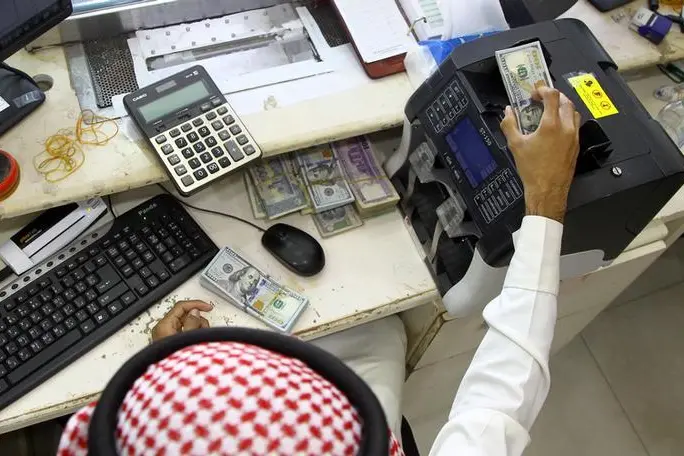PHOTO
RIYADH — Private wealth growth in the Kingdom of Saudi Arabia witnessed a slight increase in 2016 (3.1 percent). It continues to rank as the country with the highest private wealth in the GCC, according to a new report by The Boston Consulting Group (BCG) “Global Wealth 2017: Transforming the Client Experience” released Sunday. In Saudi Arabia, the growth of private wealth was driven primarily by equities. In 2016, the amount of wealth held in equities increased by 6.2 percent, in comparison to cash and deposits at 1.7 percent and bonds at 0.9 percent.
Based on the 2017 Global Wealth Report, overall growth of wealth in Saudi Arabia is expected to increase slightly to 3.2 percent over the next five years. Equities at 5.5 percent compound annual growth rate (CAGR), cash and deposits, and bonds, at 1.8 percent CAGR respectively, will all contribute to this slight growth over the next five years.
This 17th annual study by BCG outlines the evolution of private wealth from both global and regional perspectives, addresses key industry trends, and places special emphasis on how players can create fresh and innovative client journeys by leveraging digital technology to its fullest in wealth management business and operating models.
“Digital initiatives in the industry have centered largely on providing customers with basic portfolio functionalities and the ability to execute standard trading and payment transactions,” said Markus Massi, Senior Partner & Managing Director of BCG Middle East’s Financial Services practice. “What’s needed is to design and implement fully rethought, reworked, and advanced client journeys that seamlessly combine digital, relationship management, and expert channels to transform the entire client experience from end to end.”
“To build successful business models and optimize cost reduction, wealth managers need to increase their investments. Although companies in a number of other industries have taken this approach to the evolving digital environment, many wealth managers have not, as such segmentation of clients on the basis of their behavior has often been neglected. Old ways of doing work are ceasing to be efficient in the new private banking environment,” Massi added.
Over the next five years, wealth in the Middle East and Africa region is set to reach $12 trillion—and the UAE, Oman, Qatar, and Saudi Arabia’s contribution will account for 21.1 percent.
Taking an in-depth look at wealth distribution, private wealth held by ultra-high-net-worth (UHNW) households (those with above $100 million) in Saudi Arabia experienced a strong growth rate—at 6.7 percent— in 2016. Growth is expected to decline somewhat through 2021, with private wealth held by this specific segment slowing to a CAGR of 5.5 percent.
The upper high-net-worth (HNW) segment (those with between $20 million and $100 million) experienced steady growth in 2016 at 5.6 percent. In the next five years, the projected growth of this segment will decline slightly to 4.8 percent CAGR.
In Saudi Arabia, private wealth held by the lower HNW segment (those with between $1 million and $20 million) witnessed a slight growth of 2.7 percent in 2016. Private wealth in this segment has a projected CAGR of 3 percent over the next five years. This segment is expected to experience a rise in growth in the next five years.
The total number of millionaire households (those with more than $1 million in net investable assets) in Saudi Arabia increased by 1 percent in 2016. Looking ahead, growth is set to continue at a steady pace 1.5 percent CAGR by 2021.
The report also revealed that, in 2016, Switzerland remained the largest destination for the Middle East and Africa’s offshore wealth, accounting for 31 percent with a projected CAGR of 4.7 percent over the next five years. This was followed by the UK/Channel Islands at 23 percent with a CAGR of 5 percent, and Dubai at 18 percent with a CAGR of 4.5 percent.
“In the Middle East and Africa (MEA), wealth expansion should stem, in relatively equal portions, from existing assets and higher household savings,” said Massi. “Looking ahead, the share of wealth allocated to each asset class is expected to remain stable, with regional wealth projected to rise at an annual rate of roughly 8 percent through 2021. In the coming years, more local players will enter the wealth management market as traditional revenue pools become more competitive.”
Moreover, according to the report, global private financial wealth grew by 5.3 percent in 2016, to $166.5 trillion, driven primarily by accelerating economic growth and the strong performance of equity markets in many parts of the world. The rise was greater than in the previous year, when global wealth rose by 4.4 percent. All regions experienced an increase in overall wealth, and Asia-Pacific once again was the fastest-developing region, with nearly double-digit growth of 9.5 percent. Western Europe posted modest growth (3.2 percent) as uncertainty over Brexit played a role. By the end of 2017, the level of private wealth in Asia-Pacific is projected to surpass that in Western Europe, and by 2019, the combined level of private wealth in Asia-Pacific and Japan is projected to surpass that in North America.
The report noted that offshore wealth grew at a slower pace (3.7 percent) than onshore wealth did (5.4 percent) in 2016. Switzerland remained the largest offshore center, with a 24 percent share, but that share is projected to decline through 2021. Hong Kong and Singapore remain the fastest-growing offshore centers globally because of both their status as the preferred booking centers for regional clients and the anticipation of strong growth in Asia-Pacific. Expansion is expected to continue in the long term, but China’s ongoing restrictions on investment outflows may slow it down to some degree in the short term.
Besides, wealth managers have seen a steep decline in top-line margins over the past ten years, with return on assets declining across diverse regions and types of players. Although a number of institutions have been cutting costs to help mitigate negative trends, many have not commensurately increased investments to help adapt to the new digital environment. In the past year, however, BCG has observed an inflection point, with more wealth managers using cost savings and other resources to increase their strategic investments. They are shifting from a short-term focus on maintaining profitability to a longer-term, transformative outlook that involves defining the business model of the future—one that will be digitized and vertically disintegrated, with noncore functions highly commoditized.
The report further noted that in order to make a true step change and leapfrog the competition, wealth managers need to shift their approach to digital technology and design advanced, high-impact client journeys front to back—creating a next-generation, 2.0 version of the client experience. Client journeys 2.0 that seamlessly navigate their way through the front, middle, and back office. That cut across all digital, relationship manager, and expert contact points to focus on the moments that matter most to clients. Moreover, the report noted the alignment of all capabilities and processes for the delivery of the right services at the right time go beyond most current approaches.
© The Saudi Gazette 2017












